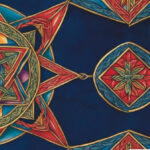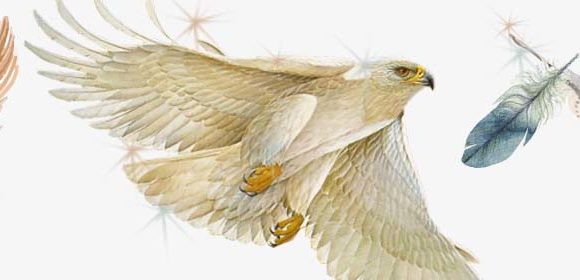For thousands of years, humans have looked to the skies not only for navigation and seasonal guidance, but also for answers to the deepest existential questions — where did we come from? Why are we here? What is our connection to the cosmos?
At the intersection of mythology, religion, and astronomy lies a field known as astrotheology — the study of ancient belief systems as symbolic representations of celestial phenomena and cosmic cycles. From the gods of Olympus to the resurrection of Christ, astrotheologists argue that many religious narratives encode astronomical knowledge, serving as metaphorical maps of the stars rather than literal historical events.
In a time of spiritual questioning and scientific rediscovery, astrotheology offers a powerful lens for reinterpreting humanity’s sacred stories — not as outdated myths, but as timeless cosmic blueprints.
What Is Astrotheology?
Astrotheology is the exploration of how ancient cultures used astronomy to shape their spiritual beliefs, rituals, and mythologies. It suggests that many religious texts and symbolic figures are based on astronomical observations — such as the sun’s annual path through the zodiac, the lunar cycles, eclipses, planetary alignments, and the precession of the equinoxes.
For example, the death and rebirth of solar deities, virgin births, and saviour figures appearing every 2,000 years may not just be theological ideas — they may reflect astronomical allegories, deeply woven into the fabric of human spirituality.
The central idea is that the heavens were the original scriptures, and ancient wisdom keepers encoded their knowledge of the cosmos into myth, story, and religion.
The Solar Savior Archetype
One of the most striking patterns in astrotheology is the recurring myth of the dying and resurrecting sun god. Figures like Horus (Egypt), Mithras (Persia), Krishna (India), Dionysus (Greece), and Jesus Christ (Christianity) all share similar symbolic elements:
- Born on or around December 25th
- Born of a virgin
- Twelve followers or disciples
- Performs miracles
- Dies and resurrects after three days
From an astrotheological view, this narrative mirrors the sun’s path through the winter solstice. Around December 21st, the sun appears to “die” — reaching its lowest point in the sky. For three days, it remains still (in the constellation of the Southern Cross), and then on December 25th, it begins its “resurrection,” moving northward and heralding the return of light.
This celestial drama was spiritually profound to ancient people, whose lives depended on the sun’s cycles. As such, solar worship became central to many religious traditions — eventually evolving into symbolic stories and messianic figures.
Zodiacal Symbolism in Scripture
Another powerful astrotheological key lies in the zodiac — the twelve constellations the sun passes through over the course of a year. These are not just astrological signs, but archetypal symbols that influenced mythology and religious structure.
In the Bible, for instance, Jesus is associated with the age of Pisces (the fish) and is often symbolized by fish or fishermen. The previous age, Aries (the ram), aligns with the era of Moses, who blew the ram’s horn and spoke against golden calf worship — a reference to the fading Age of Taurus.
This framework ties into the precession of the equinoxes — a 25,920-year cycle in which Earth’s axis slowly shifts, causing the position of the spring equinox to move backward through the zodiac. Each “age” lasts about 2,160 years and appears to influence cultural, spiritual, and mythological themes. According to this theory, we are now shifting into the Age of Aquarius — a time associated with knowledge, technology, and spiritual awakening.
Celestial Alignments and Ancient Structures
Across the globe, ancient monuments align with celestial events in ways that defy coincidence. The Great Pyramids of Giza, the Stonehenge circle, Mayan temples, Easter Island statues, and Angkor Wat are all built in alignment with solstices, equinoxes, or star constellations, especially Orion, Sirius, and the Pleiades.
These alignments suggest that ancient civilizations had a highly advanced understanding of the heavens, and encoded this knowledge into their architecture — not just for observation, but possibly for ritual, timekeeping, and spiritual initiation.
In this context, religious temples were also observatories — places where the cosmic cycles were not only tracked but celebrated.
Myth as Celestial Metaphor
Rather than seeing ancient myths as primitive stories, astrotheology invites us to interpret them as cosmic metaphors — rich, symbolic languages designed to convey timeless truths about the rhythm of the stars, the nature of consciousness, and humanity’s place in the universe.
For instance:
- The Greek god Cronos (time) devouring his children may symbolize the inevitability of time consuming all things.
- The Norse apocalypse Ragnarök may echo celestial cataclysms or cosmic resets.
- The Egyptian Osiris myth — involving death, dismemberment, and resurrection — may reflect solar and lunar cycles, or even the soul’s journey through dimensions.
A Modern Reawakening
Astrotheology is experiencing a modern revival, driven by researchers, content creators, and spiritual seekers looking to reconnect ancient wisdom with contemporary insight. Figures like Santos Bonacci, Jordan Maxwell, and Michael Tsarion have helped bring astrotheology into the digital age, challenging traditional religious interpretations and inviting a more cosmic, symbolic view of spirituality.
In an era where scientific cosmology and spiritual cosmology are beginning to echo each other — from the Big Bang to the Source Field, from dark matter to mystical aether — astrotheology may provide a bridge between ancient myth and modern meaning.
Final Thoughts: The Sky Was Our First Scripture
Astrotheology challenges us to look beyond dogma and into the stars that have inspired humanity for millennia. It invites us to reinterpret religious traditions not as outdated systems, but as poetic reflections of cosmic truths — truths that unite all cultures, all faiths, and all times.
In a world that often feels disconnected and disenchanted, astrotheology reminds us that we are — and always have been — children of the cosmos, encoded with the rhythm of the stars and the wisdom of the heavens.







